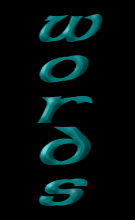August 7, 2001
Observers Question How
Tolkien Will Translate to Film
Staff Reporter
“And he made first the ... Holy Ones, who were the offspring of his thought, and they were with him before aught else was made. And he spoke to them, propounding to them themes of music; and they sang before him, and he was glad.”
This “Great Music” went out “into the Void, and it was not void.” But something went wrong. The greatest archangel, Melkor, “He who arises in Might,” became proud and rebelled. Great was his fall into evil, and he became Morgoth, “Dark Enemy of the World.” His chief servant was Sauron, who created rings of power to rule the world and “One Ring to rule them all.”
The rest is a long story. Like all myths, those who want to understand “The Lord of the Rings” trilogy must start at the beginning — with the author’s creation story in “The Silmarillion.” J.R.R. Tolkien knew what he was doing in his tale of elves, dwarfs, hobbits and men.
“The Lord of the Rings,” he wrote to a friend in 1953, just before book one was published, is “a fundamentally religious and Catholic work; unconsciously so at first, but consciously in the revision.” Yet Tolkien also told Father Robert Murray it was his desire to stay theologically orthodox that led him to avoid being too specific, despite the biblical parallels in the creation story.
“That is why I have not put in, or have cut out, practically all references to anything like ‘religion,’ to cults or practices, in the imaginary world. For the religious element is absorbed into the story and into the symbolism,” wrote Tolkien.
The result is a stunningly ambitious myth, yet one that lacks the clear symbolism of an allegory or parable. Believers who share Tolkien’s faith can follow the roots into Catholic imagery and tradition. Clearly the evil in Middle Earth is good that has been twisted and perverted. The humble are tempted, yet triumph through sacrificial love. One age passes away, before a glimpse of a world to come. There is much more.
Yet millions have read an epic tale of nondoctrinal good vs. undefined evil — period. It all depends on one’s point of view, especially when it comes time for other artists to re-create the myth with the help of a camera lens.
When “The Lord of the Rings” begins reaching theaters in December, will the myth remain centered in its creator’s faith?
“Tolkien could not create from nothing. Only God can do that. But he was able to sub-create an entire world using his imagination, his beliefs and his experiences in the world around him,” said British writer Joseph Pearce, author of “Tolkien: Man and Myth.”
“That is certainly what he set out to do with ‘The Lord of the Rings’ ... but if you tear the myth away from Tolkien’s worldview, then the story isn’t going to make sense anymore. It may, literally, become incoherent — a neo-pagan fantasy.”
This is especially true since Tolkien’s work includes images and ideas drawn from legions of myths, legends and traditions. His goal was to create a myth that combined elements of others, Peace said, “with the whole story illumined from within by a Trinitarian, Christian light.”
Now, new artists will be “sub-creators” of movie versions of “The Lord of the Rings” that will cut and mold 500,000 words of prose into six hours of multiplex magic. Millions will see these movies, and most will use this lens to interpret the books — if they read or reread them. The official Web site (www.lordoftherings.net) offers no sign of Tolkien’s faith or worldview.
There is no telling what may end up on the screen, Pearce said. “The great strength of Tolkien’s work may, in the end, be its weakness. He has created truth in a form that is truly sublime — myth. Yet that is also a form of art that can easily be twisted. He was writing a myth, but he wanted it to be a True Myth, a myth rooted in Truth with a capital ‘T.’ Take away that truth, and you change the myth.”
